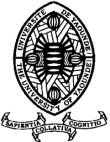Value of Biological Scores for the Diagnosis of Liver Fibrosis in Patients Co-Infected with Human Immunodeficiency Virus and Viral Hepatitis B and C in Yaounde
DOI:
https://doi.org/10.5281/hra.v2i4.5528Keywords:
coinfection, VIHAbstract
RÉSUMÉ
Introduction. La coïnfection entre le virus de l’immunodéficience humaine (VIH) et les hépatites virales B (HVB) et C (HVC) est un facteur majeur de progression de la maladie hépatique à travers le développement d’une matrice extra cellulaire appelée la fibrose hépatique. L’objectif de cette étude était d’évaluer l’intérêt des scores biologiques APRI (ASAT to Platelet Ratio Index) et FIB4 (Fibrosis-4) pour le diagnostic de la fibrose hépatique chez des patients coinfectés VIH/HVB ou VIH/HVC. Méthodologie. Nous avons mené une étude transversale descriptive et analytique de type exposés – non exposés avec collecte de données rétrospective à l’hôpital général de Yaoundé, et au Centre hospitalier universitaire de Yaoundé sur une période de 7 ans allant du 01er janvier 2016 au 31 décembre 2022. Le groupe de sujets exposés était constitué de patients porteurs d’HVB ou d’HVC avec coïnfection avec le VIH naifs de traitement antiviral. Le score de fibrose hépatique était calculé pour chaque patient à l’aide des scores APRI et FIB4. Résultats. Nous avons enregistré 77 patients coinfectés soit 31 coïnfections VIH/VHB et 46 coïnfections VIH/VHC avec un âge moyen de 49,7 ± 12,4 ans pour un sex ratio de 0,48. Ils ont été appariés avec 77 patients monoinfectés. La médiane du score APRI des sujets coinfectés (0,59) était plus élevée que celle des sujets non infectés (0,42) (p=0,026). Le score FIB4 des sujets coinfectés était également supérieur à celui des sujets monoinfectés avec des valeurs respectives de 1,62 et de 1,49, mais sans différence significative (p=0,344). Conclusion. Les scores APRI et FIB4 confirment la sévérité de la fibrose hépatique chez les sujets coinfectés VIH/HVB ou VIH/HVC comparativement à celle chez des sujets monoinfectés.
ABSTRACT
Introduction. Coinfection between human immunodeficiency virus (HIV) and viral hepatitis B (HBV) and C (HCV) is a major factor in the progression of liver disease through the development of an extra-cellular matrix called liver fibrosis. The objective of this study was to evaluate the usefulness of the biological scores APRI (ASAT to Platelet Ratio Index) and FIB4 (Fibrosis-4) for the diagnosis of liver fibrosis in HIV/HBV or HIV/HCV coinfected patients. Methodology. We conducted a descriptive and analytical cross-sectional study of exposed - non-exposed type with retrospective data collection at the general hospital of Yaoundé and at the University Teaching Hospital of Yaoundé over a period of 7 years from January 1, 2016 to December 31, 2022. The group of exposed subjects consisted of patients with HBV or HCV coinfected with HIV naïve for antiviral treatment. The liver fibrosis score was calculated for each patient using the APRI and FIB4 scores. Results. We recorded 77 coinfected patients, 31 HIV/HBV coinfections and 46 HIV/HCV coinfections with a mean age of 49.7 ± 12.4 years and a sex ratio of 0.48. They were matched with 77 monoinfected patients. The median APRI score of coinfected subjects of 0.59 was higher than that of non-infected subjects 0.42 (p=0.026). The FIB4 score of coinfected subjects was also higher than that of monoinfected subjects with respective values of 1.62 and 1.49 without significant difference (p=0.344). Conclusion. The APRI and FIB4 scores confirm the severity of liver fibrosis in HIV/HBV or HIV/HCV coinfected subjects compared to that in monoinfected subjects.
References
Dovonou CA, Amidou SA, Kpangon AA, Traoré YA, Godjedo TPM, Satondji AJ, et al. Prévalence de l’hépatite B chez les personnes infectées par le VIH à Parakou au Bénin. Pan Afr Med J. 2015;20:125.
Adewole OO, Anteyi E, Ajuwon Z, Wada I, Elegba F, Ahmed P, et al. Hepatitis B and C virus co-infection in Nigerian patients with HIV infection. J Infect Dev Ctries. 2009;3(5):369‑75.
Roehlen N, Crouchet E, Baumert TF. Liver Fibrosis: Mechanistic Concepts and Therapeutic Perspectives. Cells. 2020;9(4):875.
Barth RE, Huijgen Q, Taljaard J, Hoepelman AIM. Hepatitis B/C and HIV in sub-Saharan Africa: an association between highly prevalent infectious diseases. A systematic review and meta-analysis. Int J Infect Dis IJID Off Publ Int Soc Infect Dis. 2010;14(12):e1024-31.
European Association For The Study Of The Liver. EASL clinical practice guidelines: Management of chronic hepatitis B virus infection. J Hepatol. 2012;57(1):167‑85.
Mak D, Kramvis A. Epidemiology and aetiology of hepatocellular carcinoma in Sub-Saharan Africa. Hepatoma Res 2021;7:39.
Bigna JJ, Amougou MA, Asangbeh SL, Kenne AM, Noumegni SRN, Ngo-Malabo ET, et al. Seroprevalence of hepatitis B virus infection in Cameroon: a systematic review and meta-analysis. BMJ Open. 2017;7(6):e015298.
Bigna JJ, Amougou MA, Asangbeh SL, Kenne AM, Nansseu JR. Seroprevalence of hepatitis C virus infection in Cameroon: a systematic review and meta-analysis. BMJ Open. 2017;7(8):e015748.
Noubiap JJN, Aka PV, Nanfack AJ, Agyingi LA, Ngai JN, Nyambi PN. Hepatitis B and C Co-Infections in Some HIV-Positive Populations in Cameroon, West Central Africa: Analysis of Samples Collected Over More Than a Decade. PLOS ONE. 2015;10(9):e0137375.
Spahr L, Morard I, Hadengue A, Restellini A. La fibrose hépatique : tests non invasifs. Med Hyg 2003; 61: 261-5.
Wai CT, Greenson JK, Fontana RJ, Kalbfleisch JD, Marrero JA, Conjeevaram HS, et al. A simple noninvasive index can predict both significant fibrosis and cirrhosis in patients with chronic hepatitis C. Hepatol Baltim Md. 2003;38(2):518‑26.
unihastuti E, Wicaksana B, Wiraguna A, Hidayah AJ, Amelia F, Natali V, et al. Diagnostic performance of APRI and FIB-4 for confirming cirrhosis in Indonesian HIV/HCV co-infected patients. BMC Infect Dis. 2020; 20:372.
Dobseu R, Nanfack A, Kowo M, Ambada G, Kamgaing R, Chenwi C, et al. Evaluation of hepatic fibrosis in HIV/HCV co-infected individuals in Yaoundé, Cameroon: usefulness of APRI score in resource-constrained settings. BMC Infect Dis. 2020;20(1):758.
Ratziu V, Giral P, Charlotte F. Liver fibrosis in overweight patients. Gastroenterology 2000; 118:1117-23.
Ankouane FA, Noah Noah D, Hell Medjo E, Kamsi Djomkam I, Ndjitoyap Ndam EC. Diagnostic efficacy of ultrasound in hepatocellular carcinoma diagnosis. Journal of Applied Medical Sciences 2014, 3(2): 27-33.
Edinga BEE, Bigna JJ, Nansseu JR, Tchapmi AY, Mbouna SFM, Belinga S, et al. Simple noninvasive tests for liver fibrosis diagnosis in sub-Saharan African adults with chronic viral hepatitis B or C: A cross sectional study in Cameroon. Clin Chim Acta. 2022;536:56‑60.
Downloads
Published
How to Cite
Issue
Section
License
Authors who publish with this journal agree to the following terms:
- Authors retain copyright and grant the journal right of first publication with the work simultaneously licensed under a Creative Commons Attribution License CC BY-NC-ND 4.0 that allows others to share the work with an acknowledgement of the work's authorship and initial publication in this journal.
- Authors are able to enter into separate, additional contractual arrangements for the non-exclusive distribution of the journal's published version of the work (e.g., post it to an institutional repository or publish it in a book), with an acknowledgement of its initial publication in this journal.
- Authors are permitted and encouraged to post their work online (e.g., in institutional repositories or on their website) prior to and during the submission process, as it can lead to productive exchanges, as well as earlier and greater citation of published work










